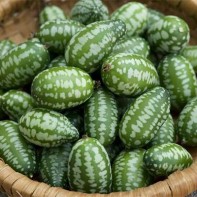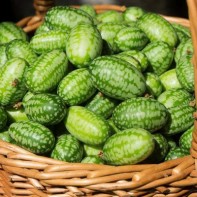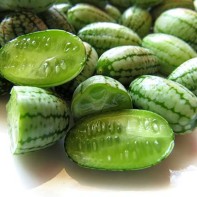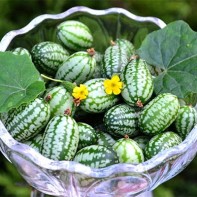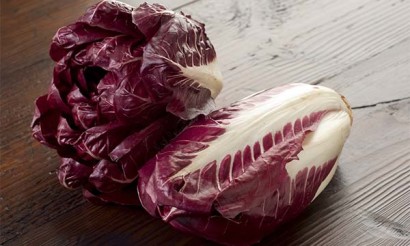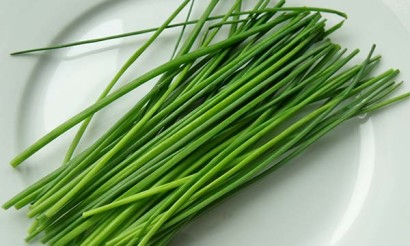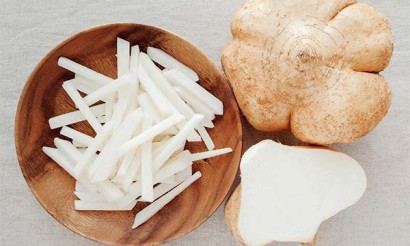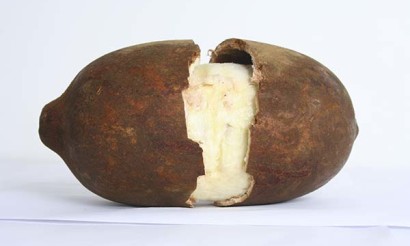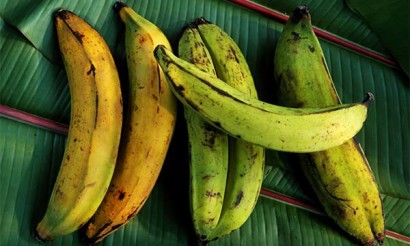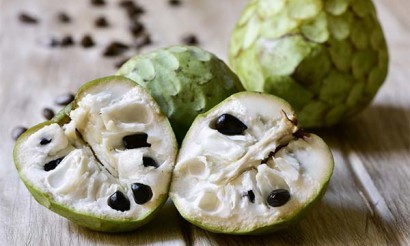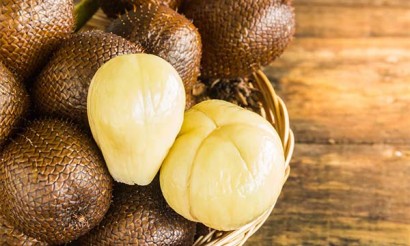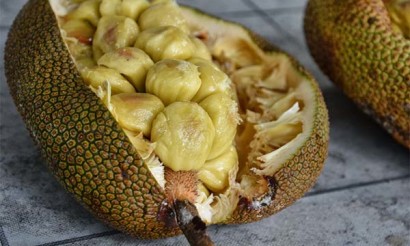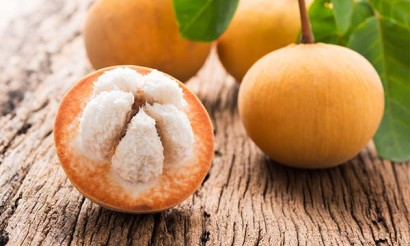Melothria: what is this vegetable and why is it useful?
There are many unusual and interesting crops that gardeners "chase". One such plant is melothria.
A mixture of watermelon and cucumber has only recently appeared in Russia, and has already managed to gain great popularity in vegetable gardens. Before planting any crop on your plot, it is necessary to get acquainted with its features and privileges. To ruin the plant and remain without a harvest is not difficult. Therefore, it is better to study everything in advance. This article will tell you about the unusual vegetable melothria, how to grow it and what you can cook from it.
What is this vegetable
Melotria is an exotic relative of the cucumber. It is bred from the pumpkin family. Externally and in taste, the fruit resembles a cucumber, only quite tiny. Its size varies from one to two centimeters, no more. Otherwise, melotrium is called mouse melon or mouse watermelon, as well as Mexican cucumber and Mexican watermelon. There are many names for this species.
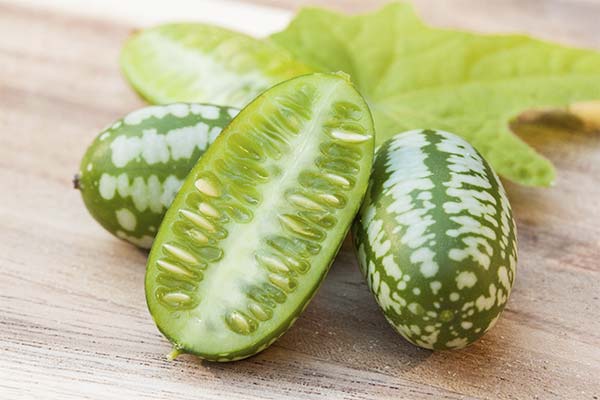
The vegetable grows on a grassy vine. It was brought to Russia from the tropical forests of Africa. The French botanist Charles Victor Nodin was the very first to describe this plant species in 1866. There is some controversy among modern scientists over the classification of melotrya made by Charles Victor, because some closely related species have not yet been fully identified.
In addition to the fruits themselves, the plant also forms rootlets. They do not weigh more than 400 grams, the size and shape like a tiny watermelon. These fruits are used in the preparation of salads. They resemble a radish in taste. The product should be used up immediately, because it does not store long.
Remove the root crops from the ground begin in the first month of autumn, by which time the main fruit will have departed.
From one plant, you can collect up to one kilogram of root crops and up to six kilograms of fruit.
What it looks like
Looking at melotrium, the first thought occurs that this plant has been crossed with cucumber and watermelon. But who could have thought of that? The African plant borrowed the shape and thickness of its leaves from the cucumber, only an improved version. For example, they do not turn yellow in the sunlight. Even in the autumn season, it does not change its green coloring.
The crop blooms with bright yellow flowers. From them comes a pleasant and inviting aroma. The vines of the plant are very strong, they cling tendrils to each other and grow upwards. They also climb up a nearby fence, fence or even a house. The stems are more than three meters long. If the shoot touches the ground, it goes very quickly into the ground. On the bush itself, fruits are formed that resemble a newly formed small watermelon. Its shape is elongated, not round. Therefore, the fruit of melothria is still similar to a cucumber. It rarely reaches three centimeters in length, its growth stops at two centimeters.
If you try the fruit with your eyes closed, you will get the feeling that you have eaten a sour cucumber. There is a pleasant sourness in the rind. White seeds form inside the fruit, so you need to have time to collect and eat them before they form. The plant also has root vegetables, which can also be eaten. It is better to add them to vegetable salad.
Where does it grow
In Russia, melothria came from Central Africa. In the locals, it is considered an aggressive plant. The fact is that melothria displaces all other crops. Because of the abundant heat, the plant grows for several years, tightly rooted in the ground and multiplies.
Melotria arrived in Europe in the late 20th century. It was used as a supplement and garnish to dishes in restaurants and cafes. At that time, few people were growing it, so there was a shortage. Only the richest and finest establishments could boast with it in front of visitors. Today, most gardeners have planted melothria in their dachas. It has proven to be a great addition to canning cucumbers, tomatoes and peppers.
You can see several different varieties on sale, such as "Colibri", "Malyutka" or "Shapito". There is no particular difference between them, so you can choose any one.
What is Melotria good for?
Melotria is a very useful crop.
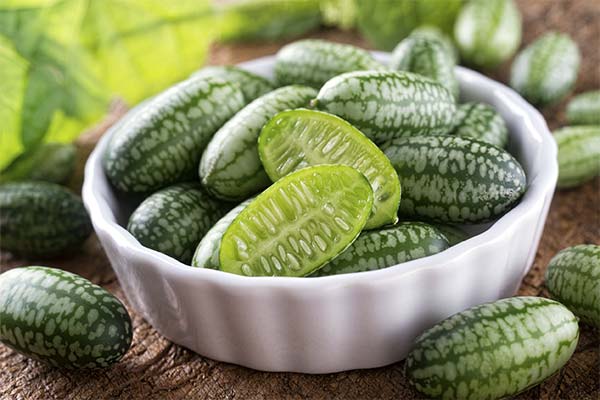
- Regular use of the fruit in food helps to normalize the work of the stomach and pancreas.
- The product itself is low-calorie, so it is great for people who want to improve the appearance of their figure. Cucumber can be consumed at night. It is well digested in the digestive system and does not cause discomfort.
- Doctors advise consuming the fruit on a regular basis for those who have hung cholesterol.
- Another useful property of melothria is that it removes excess fluid from the body, relieves swelling and normalizes blood pressure.
- Also the fruit contains a large amount of vitamin C, so it is very useful for the immune system, protects the body during the season of viruses and colds.
- Pregnant women are advised to consume the fruits of melodrama. They contain vitamin B9, which forms the nervous system of the developing baby fetus. But you should definitely consult your doctor before using it.
What harm can come.
Melothria has both beneficial properties and negative ones. People with high levels of acidity of gastric juice are not recommended to consume the fruit in large quantities. Salt or pickle melotrium should not be used by those who have kidney and liver disease. Refuse the product completely should be with a disease of the cardiovascular system, with ulcer and gastritis.
How to eat melotrium
The fruit can be eaten in a variety of ways. For example, freshly, add it to a salad. A salad can be of meat, vegetables, or even fruit. The main thing is to make sure that the fruits are young and have few seeds. It is easy to check their age, you just need to gently squeeze the fruit. If the fruit exudes juice and squeezes easily, you can eat it raw. And if the skin is hard, it is better to pickle it.
African cucumber is pickled and salted together with tomatoes, cucumbers or peppers. The option of pickling just the melodrama fruit is also used. Chefs garnish their dishes with the fruit and make delightful presentations to guests. Lovers of refined flavors add cucumbers to lemonades.
Not only the fruits are used in food, but also the root vegetables. In appearance, they are similar to yams. In taste they resemble cucumber and radish. Just like the fruits, they are added to salads, pickled and salted.
What you can make with molotrium
Melotrium fruits can simply be pickled like regular cucumbers. But for lovers of gourmet cuisine, it is better to try making a salad with the addition of mango.
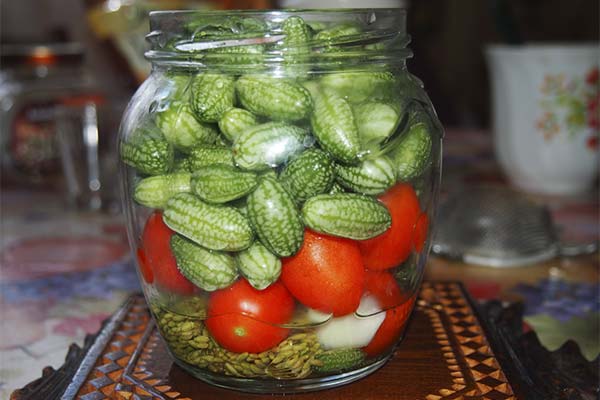
Cut the string beans into long thin slices and boil them in salted water for five minutes. Then rinse well with a colander and allow to cool. Cut the molasses lengthwise into four halves and place in a salad bowl. Finely chop the sweet bell pepper and a small onion, it should not be bitter. Add the ingredients to the melotte fruit. Peel the mango from the skin and seed, cut into small cubes and release into the salad bowl. Most interestingly, you now need chili peppers and cilantro. In small quantities, add to the bowl. Then salt and squeeze one clove of garlic. Stir and place the beans on top. Dress the dish with olive oil and lime juice. The salad should stand for 20 minutes, during which time the components will soak into each other.
Traditional medicinal uses
African tribes used the fruit of melothria in folk medicine. The vegetable is rich in useful substances, so they treated absolutely any disease. Nothing has changed over the years.
- The fruit is useful for people with arrhythmia, with thyroid disorders and with constipation.
- Nutritionists advise to include the fruit in the diet of those who have diseases with excess weight.
- Melothria is a very low-calorie product, but rich in fiber, which eliminates the feeling of hunger and satiates the body for several hours. Experts recommend once a week to organize a diet day. Eat low-calorie foods and water for the whole day. For such days just right is the African cucumber. Before a diet to consult a doctor, so as not to harm the body and not to disrupt intestinal function.
Applications in cosmetology
Not so long ago, masks began to be made from the fruit of melothria. Its juice tones the skin of the face, gives a fresh and radiant appearance. Natural components penetrate the skin, and fight the effects of stress and overwork. Regular application of masks with the juice of melothria fruits evens out the tone of the face and smoothes wrinkles. It also cleanses and protects the skin from environmental damage, such as dust and cold temperatures. It forms a thin film on the face. And throughout the day the skin looks smooth and radiant.
You can buy masks already with the addition of the juice of the fruits of melothria in the store, or you can make your own at home. Mix the pulp with honey and kiwi, apply to the face for 20 minutes and wash off the mask with warm water.
Landscape design
Melothria can be used to make a hedge. The plant can be planted along the fence, the vines will cling to the support, and grow upwards. After a couple of months you will have a hedge. Such a construction will protect from prying eyes, and also the vines will form shade, which will come in handy on a hot summer day.
The culture can be planted near the house, and then the vines will grow along the wall. The house will seem alive and bright and not only in summer, but also in late fall.
How to grow melothria
Melothria is grown by seedling method. With its seeds, you need to be careful, because they are very small.
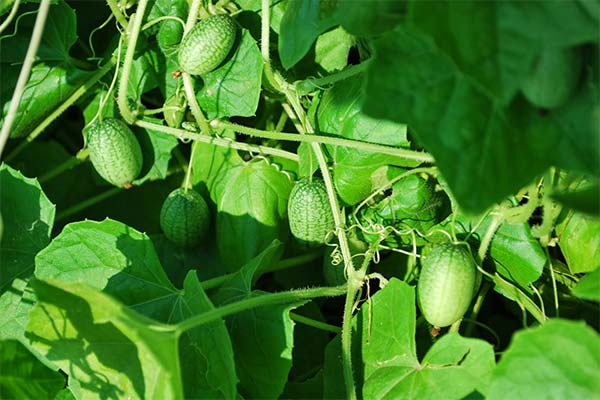
In April, you can plant the seeds in the ground. Each seed should be in its own cup or some other bowl, so that they do not interfere with each other to grow. The seedlings should be in a warm place, the soil should be constantly watered, it should not dry out. But also pour the plant should not, watering in moderation.
When the weather outside is consistently warm, the seedlings can be transplanted into the ground. Pits are made to the size of a little larger than the container in which the melodrama was. Together with the soil, carefully remove the plant and move it into the hole. Nearby, dig supports into the ground, so that the liana grows upwards. After three weeks of planting, it is advisable to feed the plant with organic fertilizer. Then fertilize again after three weeks, but with a mineral fertilizer. The crop is not exposed to diseases and pests, fertilize as a prophylactic. Removal of dry leaves will help maintain the decorative appearance. This, too, is not necessary, because melothria does not need it.
Fruits appear a few weeks after sprouting. They are collected regularly, because they, like pumpkin crops, can become overripe. Fruits are stored for a short time, before spring they already lose their nutritional properties. Therefore, it is recommended to eat them immediately after harvesting.
When choosing a place on the bed, you should take into account that melothria likes freedom. It should not be oppressed by neighboring beds. Also, you can not plant melothria in the place where crops of the pumpkin family grew before. That soil already lacks the various vitamins and minerals needed for growth. The best predecessors are potatoes, cauliflower and white cabbage, corn, onions and parsley. Do not forget that the following year the mellotrya should have another plot of the vegetable garden. You can return the culture to its original place only after two years.
The plant does not require any special recommendations for cultivation. Melothria is considered a culture unpretentious. It grows in the sun, but it can easily get used to the shade. It needs soil well fertilized. Also, it does not do without regular watering and support.
Russian gardeners are just beginning to master this culture. For many, melothria is a new and unknown plant. Its unusual ornamentality immediately attracts attention. The plant does not need complex care and careful attention. Another of the pluses of this plant is the usefulness of the fruits. They help in the fight against almost any disease. They are also actively used in cosmetology.
«Important: All information on this site is provided for informational purposes only. for information purposes only. Before making any recommendations, please consult a health care professional. specialist before using any of the recommendations. Neither the editors nor the authors shall be liable for any possible harm caused by materials."

